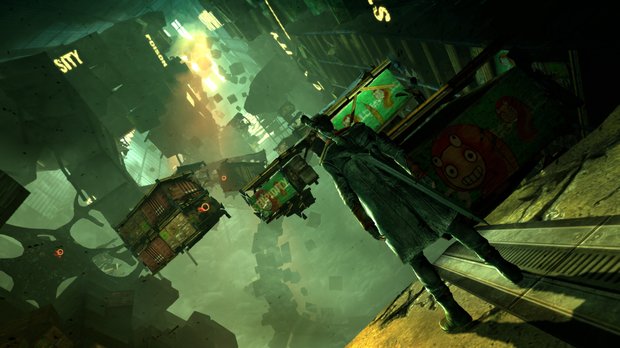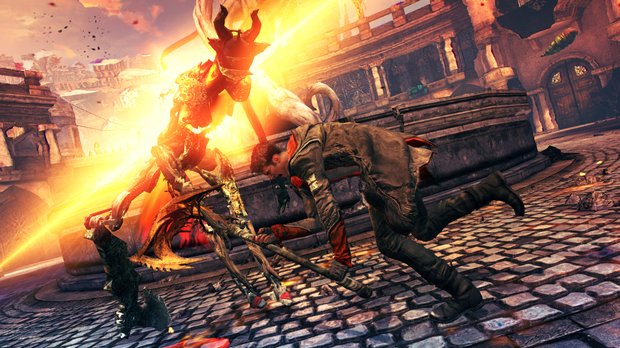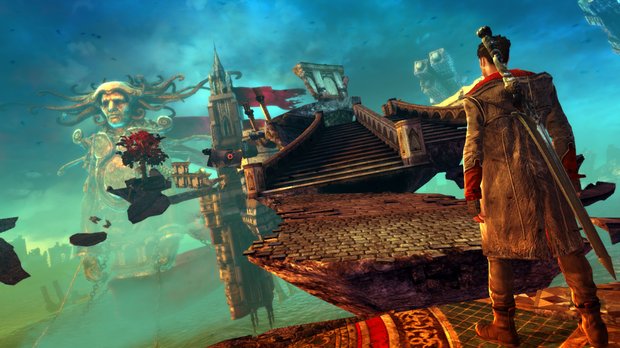DmC: Devil May Cry hands-on - 6 ways it absolutely improves on the original series
It's great, whether you like it or not
3. The gameplay mix is more creative and more coherent
Devil May Cry could always be a bit jarring when it came to breaking up the combat. Platforming and puzzle diversions often felt like uneasy token gestures, stapled to the games as an afterthought and breaking their flow rather abruptly. In DmC though, everything feels absolutely right. Dante’s jumping controls are much smoother now and, coupled with his slick, tactile grapple abilities and smooth air-dash, they make exploration almost as appealing a prospect as the game’s core demon-battery.

So it’s good that Ninja Theory has been so creative with its game design. Using the sentient, angry world as its jumping-off point, DmC mixes combat with excellently paced, imaginatively executed set-pieces every step of the way. With no physical rules to the environments it presents, the game is free to throw anything at you, from architecture-warping, do-or-die platforms runs, to hallucinogenic Bionic Commando grapple action which forces you to rebuild and reshape the very environment around yourself on the fly. At times it almost feels like performing anti-gravity parkour through an architect’s cheese-dreams, yet it blends with the ‘main’ action so well that the overall gameplay mix feels more complete and satisfying than ever before.
4. The cast are real people, not cartoon stereotypes
It’s fair to say that Ninja Theory riled a few people up when it described the new Dante as being the version you’d get in a Hollywood movie adaptation. It’s understandable too. You think of movies of games, you think of the inane works of Paul Anderson. And the Resident Evil movies are no great yardstick of characterisation. But that’s not what Ninja Theory was getting at. Rather, the idea here is simply to create a version of Dante that would work in a pleasingly non-ludicrous way if a real man had to play him in a real-world setting. To take the core elements of his personality and the essence of his visual persona, and turn them into someone believable and relatable.

Our findings on their level of success? Nailed it.
Don’t think for a second that the new Dante isn’t every bit as cool and cocky and smart-mouthed as he ever was. He absolutely is, without even a hint of emo moping whatever the current internet perception of his character might be. What he is – along with the rest of the game’s cast in fact – is a character with real depth, believable human responses to events (despite not being human), and a layered, properly explored character arc.

He has reasons for being angry and disaffected, but he’s never self-pitying. He has a period of affecting self-discovery, but it’s empowering rather than self-indulgent. His past is properly fleshed out, as is his development into his future self, but this is executed with a pacey, upbeat, and dynamic treatment. Moreover, character development is emphasised and punctuated by in-game action, rather than halting it with lengthy naval-gazing cutscenes. The upshot is that you won’t just find Dante cool this time. You’ll genuinely find yourself caring about him. And on the subject of clever storytelling…
Sign up to the GamesRadar+ Newsletter
Weekly digests, tales from the communities you love, and more



